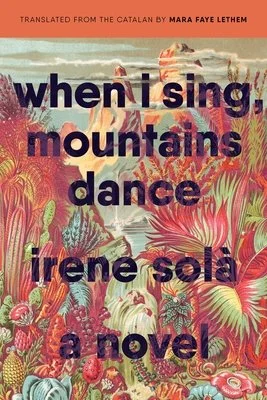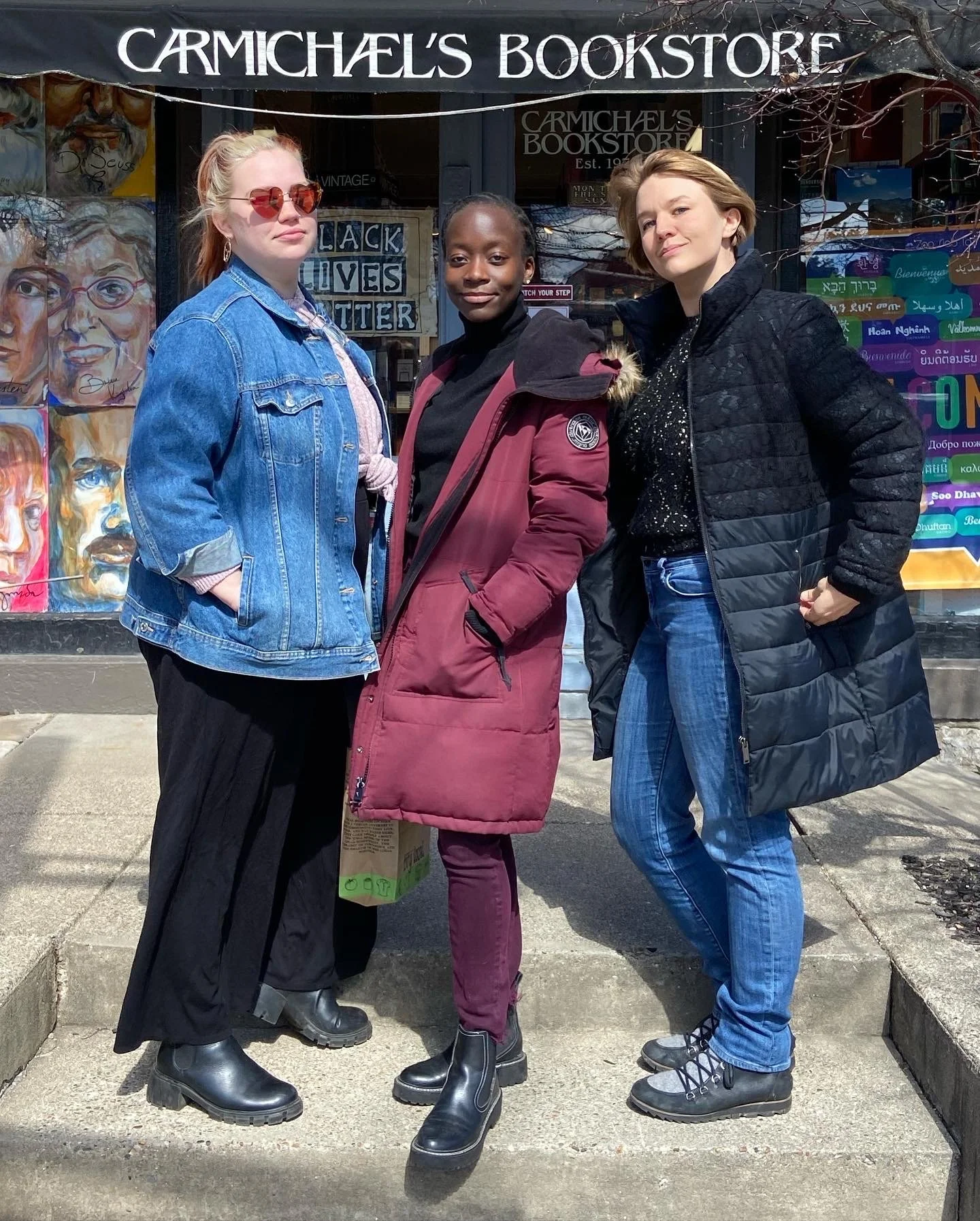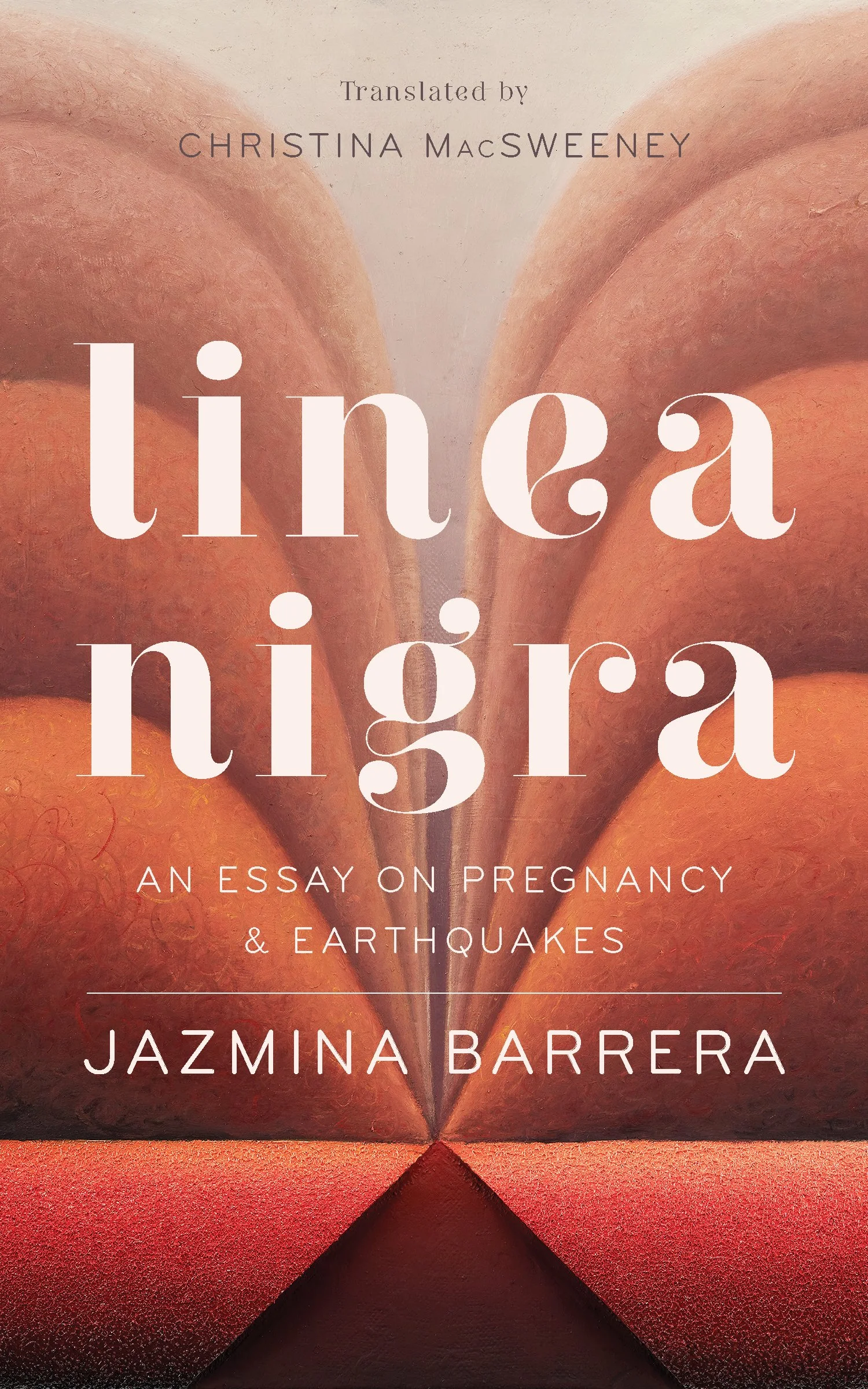Hot Off the Shelf: When I Sing, Mountains Dance
[image description: The book cover of When I Sing, Mountains Dance by Irene Sola, which features a landscape scene with mountains and verdant flora, much of which is pink, purple, orange and blue.]
Disclaimer: I received a free copy of this book in exchange for an honest review and there’s an affiliate link at the bottom if you’d like to own a copy.
Normally I begin by assuring you that the review to come is spoiler-free, but I’m happy to report that the structure of When I Sing, Mountains Dance by Irene Sola makes it pretty impossible to spoil!
There’s probably a literary or technical term for this, but I like to call it a concentric novel: a central event upon which the plot revolves occurs, then the rest of the story is structured around showing the reactions of people around the event. It’s like a stone thrown into a pond and every ring that ripples out is a different character’s perspective of the rock hitting the surface of the water. Whoever reviewed the novel for Kirkus called it a “kaleidoscopic technique,” which sums up the structure pretty well.
Before I dive in, here’s the synopsis:
Near a village high in the Pyrenees, Domènec wanders across a ridge, fancying himself more a poet than a farmer, to “reel off his verses over on this side of the mountain.” He gathers black chanterelles, attends to a troubled cow. And then storm clouds swell, full of electrifying power. Reckless, gleeful, they release their bolts of lightning, one of which strikes Domènec. He dies. The ghosts of seventeenth-century witches gather around him, taking up the chanterelles he’d harvested before going on their merry ways. So begins this novel that is as much about the mountains and the mushrooms as it is about the human dramas that unfold in their midst.
When I Sing, Mountains Dance, winner of the European Union Prize, is a giddy paean to the land in all its interconnectedness, and in it Sola finds a distinct voice for each extraordinary consciousness: the lightning bolts, roe deer, mountains, the ghosts of the civil war, the widow Sió and later her grown children, Hilari and Mia, as well as Mia’s lovers with their long-buried secrets and their hidden pain.
Irene Solà animates the polyphonic world around us, the fierce music of the seasons, as well as the stories we tell to comprehend loss and love on a personal, historical, and even geological scale. Lyrical, elemental, and mythic, hers is a fearlessly imaginative new voice that brilliantly renders both our tragedies and our triumphs.
I was interested in this novel because 1) I love concentric novels, and 2) when the novel was published in its original Catalan, it got rave reviews. I’ve rarely seen a book with so many reviews that still solidly had above a 4.0 on Goodreads. Because of its success (and quality), Graywolf Press, which is based in Minneapolis, published the English language version.
I’ll admit that while I read a number of translations, usually novels, I don’t normally pay attention to who the translator is, but I kept thinking Mara Faye Lethem’s name sounded familiar. It’s because I read another translation of hers that I really enjoyed, Brother in Ice by Alicia Kopf, a few years back. So I’m starting to think she’s something of a guide star for finding great novels originally written in Catalan.
Onto the story. Domènec, the protagonist, is a poet, so it’s fitting that the novel is written in poetic language. It sucks you in and the turns of phrase keep you interested. Plus, since Domènec dies very early in the book, it’s almost as if the chapters to come, due to their own poetry, are a tribute to him in both form and content.
The multitude of perspectives is what really sells When I Sing, Mountains Dance for me. Some of the perspectives are what you’d expect––Domènec’s widow, children, and neighbors––but the other perspectives are what makes it fun. The ghosts of 17th-century witches, ghosts of the civil war, lightning, mountains, roe deer (which I had to google––it’s basically a mini version of the deer we see in North America), and a rather comical dog, just to name a few. Some characters get multiple chapters, while others may only get one.
Most of the time it’s pretty clear who is speaking, though sometimes it’s a bit of a puzzle to figure out a perspective. Namely, the non-human, non-animal perspectives were challenging, like the lightning. But once you figure it out, it’s rewarding.
Sound and music also figure heavily into the novel, which I should have guessed with a title like When I SING, Mountains Dance. Much detail is given to sound, which I appreciate because I feel like musicality in a physical, literal sense is often ignored unless the book is specifically about music. I’m always impressed when authors find natural, creative ways to incorporate music in a story that’s not literally about a musician or band.
I read up a little bit on the author, Irene Sola, and was not at all surprised to find that she’s also a visual artist and has worked in art galleries. To be a visual artist requires intense attention to detail, which comes out in her descriptions in the novel. The Pyrenees are alive with sound and color, and in Sola’s hands they’re almost a mythical place, even though they actually exist on earth.
When asked what inspired her to write When I Sing, Mountains Dance, Sola shared an interesting quote:
When I started gathering ideas and materials, I imagined the mountains covered with layers of all sorts of things: anecdotes, lives, events (human or non-human) that had taken place there had and had left some sort of trace. I was analyzing these remains, picking them up and piecing them back together while looking at what I fantasized as the geological strata of stories. I wanted to tell a story from the perspective of all of those who inhabit this section of the mountain ranges: women and men from our day and era, but also animals, weather, fungi, ghosts, and even mythological creatures who have long been thought to roam the Pyrenees.
Though she didn’t say it explicitly, I think she’s talking about more than just her novel. What Sola is describing is how all the best stories come about: seeing the layers of what has gone before in a place (or even a person) and analyzing those remains.
I also didn’t know until I read the interview with her, that her chapter from the perspective of women who were murdered as a result of witch trials was based on actual events in the area. Sola reviewed multiple court documents from the trials, all of which were written by the murderers, not the accused and tortured women themselves. So while When I Sing, Mountains Dance is obviously a novel, there’s a lot of truth in it too. I only recently learned that witch trials weren’t just a thing in Salem––they took place all over Europe and the UK as well.
Overall, I’ll say that if you like translated works generally and you especially like poetic prose with stories that will make you think, then you’re going to love When I Sing, Mountains Dance by Irene Sola. If you’d like to own a copy, I’d love for you to buy yourself one using my Bookshop link. Bookshop is an Amazon alternative that supports indie bookstores and bloggers.






